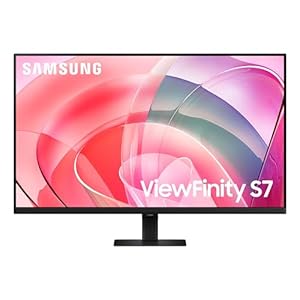In about 11 years, one in every of humankind’s most formidable missions is set to launch into space. A long time within the making, the Laser Interferometer House Antenna, or LISA, might revolutionize our understanding of the universe by means of its detections of gravitational waves. That is your in-the-weeds walkthrough of the science that can make this intrepid challenge attainable.
The Hubble House Telescope redefined our view of the universe, and the newly launched Webb House Telescope is now doing the identical. An formidable, unprecedented area telescope, set to launch subsequent decade, will proceed on this custom, however it would accomplish that in methods by no means earlier than imagined, with the flexibility to detect phenomena like gravitational waves—ripples in spacetime that provide a brand new window into the universe’s most mysterious occasions.
Gravitational waves and why they matter
Our universe is rife with gravitational waves—nearly imperceptible ripples in spacetime generated by the actions of the universe’s most huge objects, neutron stars and black holes. Gravitational waves journey at gentle pace, however don’t get it twisted: they aren’t gentle. However like gravitational fields round huge objects, the waves warp gentle, revealing their presence to solely probably the most attentive scientists—with probably the most delicate tools.
In 2016, the Laser Interferometer Gravitational-Wave Observatory (LIGO) and Virgo collaborations introduced the primary detections of the refined waves, which stretch and squeeze the material of the universe as they emanate from their ginormous sources. So far, the LIGO-Virgo-KAGRA detector community has revamped 100 gravitational wave detections.
Gravitational waves supply up loads of details about the methods that generate them, serving to scientists revise their catalogues of the attainable sizes, environments, and mechanics of black holes and neutron stars.
It’s been practically 10 years because the first LIGO detections, which confirmed gravitational waves as function of the universe, one which was famously predicted by physicist Albert Einstein a century earlier than. However LISA was within the works years earlier than these detections—it was first proved out on paper by the late Pete Bender, a physicist at JILA, over 30 years in the past. However the massively advanced endeavor started taking form in earnest within the late Nineteen Nineties, and the mission was given the formal go-ahead by ESA in January.
“LISA’s so difficult that, to start with when it was proposed, nobody believed it was attainable,” mentioned Ewan Fitzsimons, a researcher on the College of Glasgow and principal investigator of the UK {hardware} contribution to LISA, in a video name with Gizmodo. Fitzsimons has been concerned with LISA for 18 years, starting with LISA Pathfinder and now engaged on the optical benches for the present mission. What are optical benches? We’ll get into that.
The science of recognizing gravitational waves
Gravitational waves aren’t made up of photons of sunshine, so they’re invisible to telescopes just like the one arrange in your yard and the multi-billion-dollar machines floating in area already. However gentle is what astronomers have set to work with. So how do they see these ripples in spacetime? Easy: exact measurements of laser beams.
“We’re doing laser interferometry each in LIGO and in LISA,” mentioned Ryan DeRosa, who has led the event of the LISA telescope and labored on the mission’s interferometry, in a name with Gizmodo. “Meaning we’re primarily utilizing the wavelength of the laser as a ruler, to determine if the size modified or not.”
In LIGO, these laser beams are contained in underground, miles-long tunnels, the place they’re shielded (to the perfect of scientists’ talents) from the disruptive rumblings of passing trains, the wind, and even the grumbles of Earth itself. The laser beams are bounced around mirrors within the observatory. As gravitational waves cross by means of LIGO, the time it takes the laser gentle to bounce by means of the system informs physicists as as to whether a gravitational wave occasion simply handed by means of our cosmic neighborhood.
“However that solely works as much as the diploma to which your ruler doesn’t change,” DeRosa added. In different phrases, if the frequency of your laser deviates in any respect because the beams make their heavenly journey backward and forward between the LISA spacecraft, the information you get from them is ineffective. The gravitational waves’ refined interactions with LISA would get misplaced.
A footnote: laser interferometry isn’t the one method to spot gravitational waves. Pulsar timing arrays spot ripples with even longer wavelengths; these arrays monitor the timing of sunshine flashes from quickly spinning pulsars to find out when gravitational waves have hastened or hampered the transit of these photons.
Why put an observatory in area?
Quickly after the primary gravitational waves had been detected, NASA and ESA launched the LISA Pathfinder, a proof-of-concept mission that examined out scientific elements crucial to LISA’s success. Particularly, the pathfinder contained two take a look at plenty to point out {that a} near-perfect gravitational free fall was attainable inside the spacecraft, and could possibly be exactly measured.
LISA will “function in mainly an Earth-like orbit. Every of the [three] spacecraft is in an analogous orbit across the Solar than Earth is, however they’re all shifted behind the Earth,” mentioned Ira Thorpe, a LISA challenge scientist, in a cellphone name with Gizmodo. “They’re all at barely completely different inclinations and barely completely different orbital phases, and you find yourself with this triangular constellation that’s really remarkably secure.”
Thorpe is engaged on LISA on behalf of NASA, although the mission is definitely an ESA-led collaboration. Earlier than LISA—certainly, earlier than the LISA Pathfinder—Thorpe was concerned in a primary try on the LISA mission, additionally referred to as LISA. “We like our model imaginative and prescient,” Thorpe mentioned.
There are two fundamental technical challenges for a gravitational wave detector, Thorpe mentioned. One is that you simply want no less than two freely falling objects, that means that the one drive appearing on these plenty is gravity. The opposite problem is to measure the space between these objects, to measure the curvature of spacetime.
How is LISA’s science completely different from LIGO’s?
“You’re all the time chasing small numbers and also you’ve bought two choices,” DeRosa mentioned. “You’ll be able to measure an especially small change in size over a protracted size—that’s what LIGO does. Or you possibly can measure a fairly small size change over an infinite size—that’s what LISA does.”
LIGO’s arms are simply (“simply!”) 2.5 miles (4 kilometers) lengthy. That’s past puny—it’s downright microscopic in comparison with LISA, whose laser-beamed arms will every measure 1.55 million miles (2.5 million kilometers) in size. The Solar measures 864,000 miles (1.39 million kilometers) throughout, which suggests every of LISA’s arms can be longer than our star is vast.
That doesn’t imply ground-based detectors like these managed by the LIGO-Virgo-KAGRA Collaboration aren’t helpful. They are going to detect different types of occasions. Increased frequency gravitational waves correspond to sources of decrease mass, whereas decrease frequency waves are generated by a lot bigger issues, like supermassive black holes. LISA will gather information on a decrease frequency band than LIGO, revealing gravitational wave sources we merely couldn’t see utilizing earthbound machines.
In contrast to LIGO, with LISA “we don’t should cope with the restrictions of being on the planet,” DeRosa mentioned. Meaning a pair issues. For one, it means all of the pesky sources of noise that may disrupt Earth-based observations received’t matter to LISA. As soon as the mission is in orbit, spinning behind Earth like an enormous trawling internet for black holes, it’s a reasonably hands-off enterprise.
That’s partly by design. As DeRosa factors out, to ship LISA off with any extra servicing elements than these that are completely needed simply provides extra payload for a rocket, and extra vectors for failure. It’s higher for LISA to be pared all the way down to the elemental methods needed for the mission goal, a reasonably ubiquitous philosophy in the case of spaceflight.
Nevertheless, that doesn’t imply LISA’s expertise in orbit can be rainbows and butterflies. Even at its most peaceable, area is a harsh and unrelenting atmosphere.
Because the LISA spacecraft cartwheels in Earth’s tow, the constellation “breathes a bit bit” yearly, Thorpe mentioned. Earth’s gravity tugs barely extra on whichever spacecraft is closest to it as they rotate, throwing the spacecraft out of alignment. Nevertheless, the sluggish drift of the spacecraft received’t intervene with the staff’s means to make gravitational wave measurements, which by-and-large occur on minute-to-hours timescales.
LISA isn’t a telescope—it’s a ‘beam expander’
Bear in mind how LISA is slowly drifting, and the way that received’t have an effect on the staff’s means to make gravitational wave measurements? Properly, partly that’s as a result of LISA has a telescope system, a vital mechanism for getting the laser beams to haul their photonic asses the million-mile distance by means of area. Because the spacecraft drift, the telescope adjusts to purpose the laser beams in the direction of their goal. However that mechanism solely has a lot vary, Thorpe mentioned.
“Finally the distortions within the constellation—over one thing like a decade—get large enough that we run out of room on that adjustment mechanism,” Thorpe mentioned. “In order that’s really what units the lifetime of LISA, in the end.”
“In case you shoot a laser beam in area, it doesn’t keep the identical measurement,” DeRosa mentioned. “It will get greater and greater and greater because it propagates alongside simply as a result of diffraction.” In different phrases, because the laser strikes away from its supply, its energy weakens. The LISA telescopes repair that subject—they blow up the radius of the laser beam by a number of hundred instances its measurement, in order that by the point the diffracted beam arrives on the different LISA spacecraft, it delivers a great variety of photons alongside the arms.
“We name it a telescope, nevertheless it’s most likely extra correct to consider it as a beam expander,” Fitzsimons mentioned. Placing the laser beam by means of the system will increase the variety of photons per unit space on the far facet of the laser, maximizing the sunshine transferred between the spacecraft.
The optical benches present “a reference aircraft for all of those measurements and the telescope itself,” DeRosa mentioned. In that method, it’s not simply the wavelength of the laser that acts as a ruler. The optical bench is what the staff is measuring towards, making it a ruler too. “Each of them are successfully your ruler, and if both one isn’t performing, you then don’t have a measurement,” Fitzsimons mentioned.
What is going to LISA see precisely?
LISA will have the ability to detect gravitational wave sources that Earth-based interferometers merely can’t: sources with longer wave durations, like compact objects ensnared by supermassive black holes and the supermassive binaries on the hearts of galaxies.
LISA may also have the ability to spot merging white dwarfs in our Milky Approach, merging intermediate-mass black holes (of which the universe is famously absent, no less than so far as astronomers can inform), and maybe hitherto unknown unique objects.
Idea begets statement and vice versa; when LIGO noticed gravitational waves, not solely did it validate Einstein, it additionally supplied a brand new proving floor for extra superior concepts in regards to the makings of the universe. LISA will reveal rather more in regards to the compact objects that litter our universe, and round which life revolves. The Milky Approach galaxy has a black gap about 4 million instances the mass of the Solar at its coronary heart. Most of the supermassive black holes LISA will examine can be a lot bigger than that (on the size of 104 to 107 instances the Solar’s mass).
The most important challenges are but to return
LISA is a $1.6 billion challenge a long time within the making. Now, groups at ESA and NASA are constructing the precise {hardware} that can be despatched to area. “The most important problem with LISA is realizing that it really works, as a result of a lot of it isn’t testable on the bottom,” Fitzsimons mentioned. “One of many hallmarks of spacecraft engineering is that, aside from very choose instances, as soon as it’s up there you possibly can’t repair it.” In different phrases, the staff has one likelihood to get issues proper.
“This can be a space-based interferometer,” DeRosa mentioned, “and normally to get into area, it’s a must to cope with a rocket. And the rocket’s bought launch hundreds, and shocks, and massive thermal swings. And my entire telescope is product of glass.”
That may be a very literal assertion. Steel swells and shrinks with temperature fluctuations, the very slightest of which can disrupt LISA’s measurements. That’s why the staff is utilizing loads of glass within the telescope’s development; whereas glass is brittle, it’s additionally robust and is a helpful materials for when LISA is spinning by means of area. Getting it up there intact will show to be a trickier endeavor.
The spacecrafts’ optical benches are being assembled by a specialised robotic integration system to lock the optical components to the bottom plate utilizing hydroxide catalysis bonding, with picometer-level precision. Many of the bench is product of glass and ceramic, and the bonding method “mainly grows glass between the optic and the bottom plate,” Fitzsimons mentioned. The staff is constructing 10 of the benches, together with a few prototypes and two spares, “in case somebody drops one.”
We’re nonetheless years away from LISA launching, however this huge endeavor is the marquee project-of-the-century for deciphering one of many cornerstones of astrophysics: black holes and the methods they form spacetime.
Trending Merchandise


SAMSUNG FT45 Series 24-Inch FHD 1080p Computer Monitor, 75Hz, IPS Panel, HDMI, DisplayPort, USB Hub, Height Adjustable Stand, 3 Yr WRNTY (LF24T454FQNXGO),Black


KEDIERS ATX PC Case,6 PWM ARGB Fans Pre-Installed,360MM RAD Support,Gaming 270° Full View Tempered Glass Mid Tower Pure White ATX Computer Case,C690


ASUS RT-AX88U PRO AX6000 Dual Band WiFi 6 Router, WPA3, Parental Control, Adaptive QoS, Port Forwarding, WAN aggregation, lifetime internet security and AiMesh support, Dual 2.5G Port


Wi-fi Keyboard and Mouse Combo, MARVO 2.4G Ergonomic Wi-fi Pc Keyboard with Telephone Pill Holder, Silent Mouse with 6 Button, Appropriate with MacBook, Home windows (Black)


Acer KB272 EBI 27″ IPS Full HD (1920 x 1080) Zero-Frame Gaming Office Monitor | AMD FreeSync Technology | Up to 100Hz Refresh | 1ms (VRB) | Low Blue Light | Tilt | HDMI & VGA Ports,Black


Lenovo Ideapad Laptop Touchscreen 15.6″ FHD, Intel Core i3-1215U 6-Core, 24GB RAM, 1TB SSD, Webcam, Bluetooth, Wi-Fi6, SD Card Reader, Windows 11, Grey, GM Accessories


Acer SH242Y Ebmihx 23.8″ FHD 1920×1080 Home Office Ultra-Thin IPS Computer Monitor AMD FreeSync 100Hz Zero Frame Height/Swivel/Tilt Adjustable Stand Built-in Speakers HDMI 1.4 & VGA Port


Acer SB242Y EBI 23.8″ Full HD (1920 x 1080) IPS Zero-Body Gaming Workplace Monitor | AMD FreeSync Expertise Extremely-Skinny Trendy Design 100Hz 1ms (VRB) Low Blue Gentle Tilt HDMI & VGA Ports








